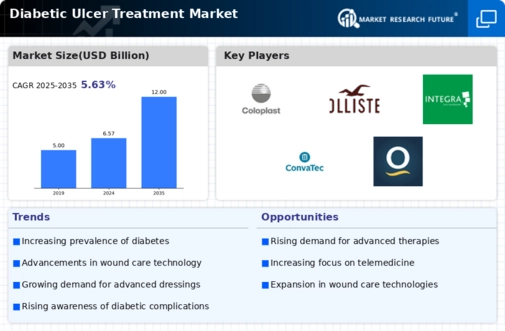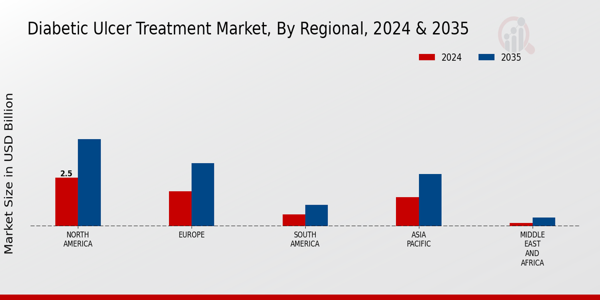Market Trends
Key Emerging Trends in the Diabetic Ulcer Treatment Market
Diabetic ulcer therapy market dynamics are dynamic due to global diabetes incidence. diabetes foot ulcers, a common and dangerous consequence, increase with the diabetes population. Market trends include enhanced wound care technology. Innovative treatments that speed healing and prevent problems are being developed by companies. Growth factors, bioengineered skin replacements, and negative pressure wound treatment are more successful than typical wound care.
Additionally, the industry is moving toward patient-centered care. Healthcare professionals are realizing the necessity of personalized diabetic ulcer therapy. The severity of the ulcer, the patient's health, and any underlying medical issues are considered. Personalized treatment approaches maximize results and reduce the cost burden of protracted healing and problems.
Prevention and early intervention are also gaining attention. Diabetic foot ulcers affect patients' quality of life, hence healthcare professionals and stakeholders are encouraging education and awareness. These efforts attempt to equip individuals and healthcare practitioners to detect ulcers early and prevent them. Early identification and treatment can decrease healthcare costs and problems.
Telemedicine and digital health solutions are also growing in diabetic ulcer therapy, according to industry trends. Remote patient monitoring, teleconsultations, and digital wound imaging are becoming standard diabetic ulcer management. These technologies allow healthcare practitioners to remotely watch patients, intervene, and advise on wound care. This boosts healthcare efficiency and patient outcomes.
Strategic agreements among major industry players are also rising in the diabetic ulcer therapy market. Pharmaceutical firms, medical device makers, and healthcare institutes are collaborating to share expertise. Collaborations enable complete treatments that combine medicinal interventions with improved wound care products and technology. Diabetes ulcer therapy is diverse, thus this integrated approach offers comprehensive options for improved patient results.
The market patterns also show how regulatory and reimbursement policies shape diabetic ulcer therapy. Governments and healthcare regulators aggressively promote new therapy development and acceptance. Advanced diabetic ulcer therapy are also affected by payment rules, which affect patient and provider choices.









Leave a Comment